
Danjugan Island is an island off Negros Occidental that had been built up in my mind as paradise. Limestone cliffs, lush forests, pristine lagoons, birds, corals, fish, and hardly anyone around – I wanted to be there.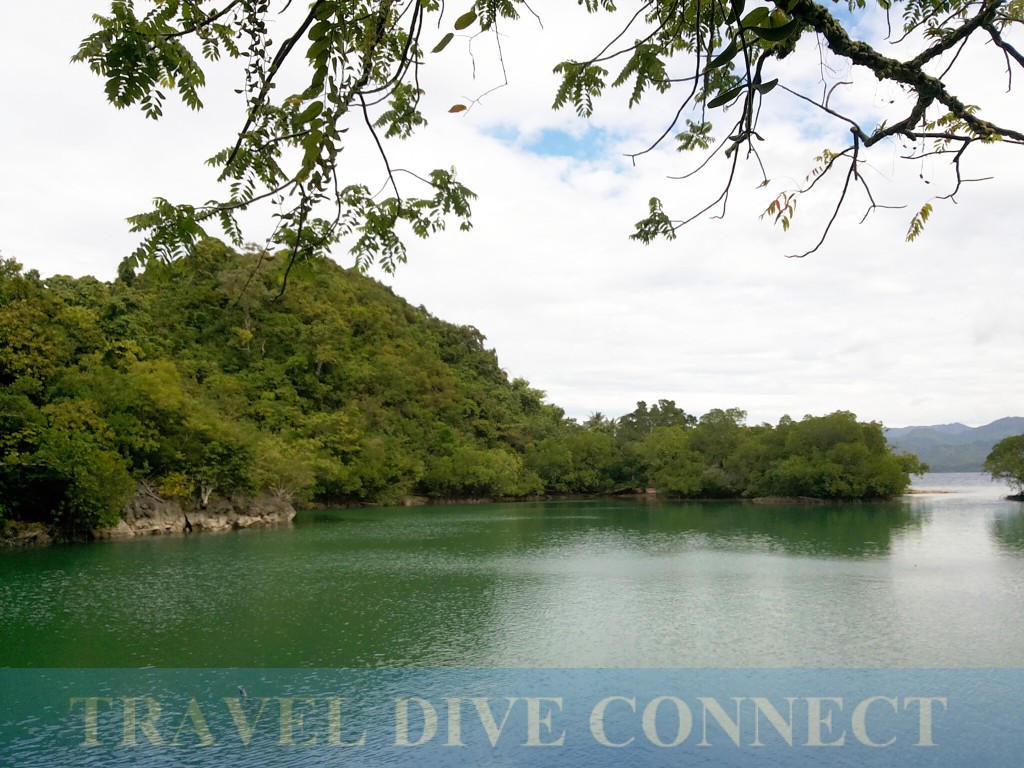
The first time I saw a glimpse of Danjugan was online. A friend of a friend tagged a friend; you know how things go on Facebook. It was a video of baby black tip sharks swimming in one of the lagoons. The snorkeler with a camera was right there with them and got so close. I was fascinated and wanted to try it.
The Long Road to Danjugan
I planned my recent Visayas trip around Danjugan Island. There were several stops but the idea was to station myself somewhere close.
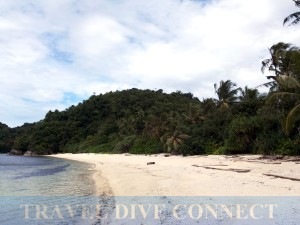
Danjugan is at least 4 hours away from the nearest airport, Bacolod City. It is around 7 hours away from Dumaguete City. So, my best option was to stay for a couple of nights in Sipalay City. A bus to the jump-off point in Barangay Bulata in Hinobaan, Negros Occidental from Sipalay only takes an hour. A 10-minute boat ride after and you’re on the island.
This way, I can explore Danjugan’s 43 hectares longer. Island management offers two options: 1. day trip for around Php 1,700 and 2. an overnight stay for Php 2,700. Overnight fees are inclusive of 3 full meals and snacks, guide services and accommodations.
My stay in Sipalay is also an opportunity to dive Danjugan. There is no functional dive facility on the island. However, there are 2 accredited dive centers that can bring guests to the island’s Marine Protected Areas (MPAs). One of which is Easy Diving Resort of Punta Ballo, Sipalay. They don’t schedule dive trips ahead so I was really lucky to join a Danjugan dive the day after I checked in.
Everything went as planned and according to schedule. I was able to do some dives around the island, as well as in Punta Ballo. I got to Danjugan for my overnight stay early the next day. And by nightfall, I had seen, swam and kayaked all over.
Paradise Island
Danjugan Island is a dream island. It is paradise. I remember being awake at 5 in the morning and standing along the strip of rocks where boats docked. I was at the center of it all. The sea was in front of me; Moray Lagoon, behind. Birds chirped and played on trees that lined the cliffs on my left. I waited for the staff to wake up. Above their rooms were tall coconut trees, where giant bats flew to. And right there, I felt immense gratefulness.
Sunrise at Danjugan Island.
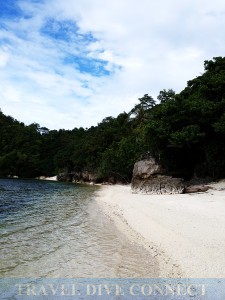
I saw most of Danjugan the day before with Tatay Ruben, the island’s 70+ year-old Bantay Dagat rep. We walked from Moray Lagoon, where the learning center was, through the forest and onto Turtle Beach. This strip of blue, white and green was separated from Typhoon Beach by a cliff. A man was working there when we came; he was fixing the bridge between the two beaches.
They had camp facilities at Typhoon Beach. This was where I did my snorkeling.
Snorkeling at Typhoon Beach.
It was also our take-off point to get to North Lagoon by kayak. North Lagoon was where baby sharks usually played when in season. There were no sharks when I went.
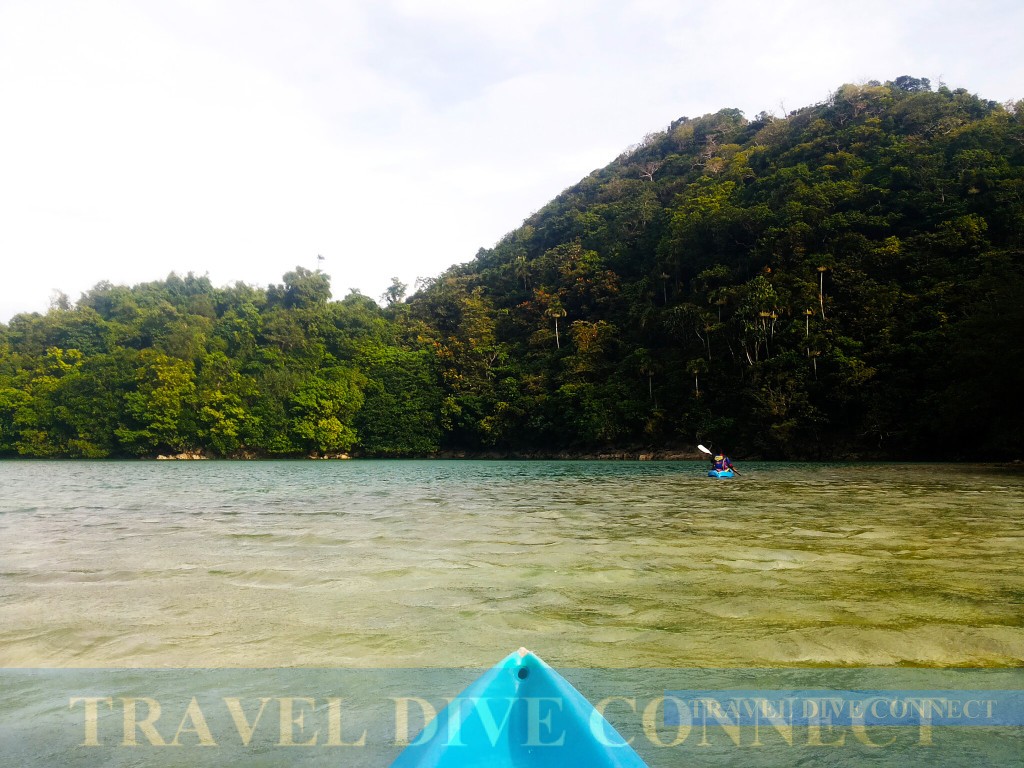
After breakfast the next day, Tatay Ruben and I walked to the Watch Tower. We again took to the forest, passing through the 4th and 5th lagoons this time. At the tower, I was treated to a 360 degrees view of paradise.
View from the Watch Tower.
Paradise Gained
It took a lot of work to get all this together. Aside from the learning center and cabanas at Moray Lagoon, there are a couple of single-floor concrete structures at Typhoon Beach. Marked paths, bolstered with bamboo strips and rocks, snake through the island. It feels safe to explore, even at night.
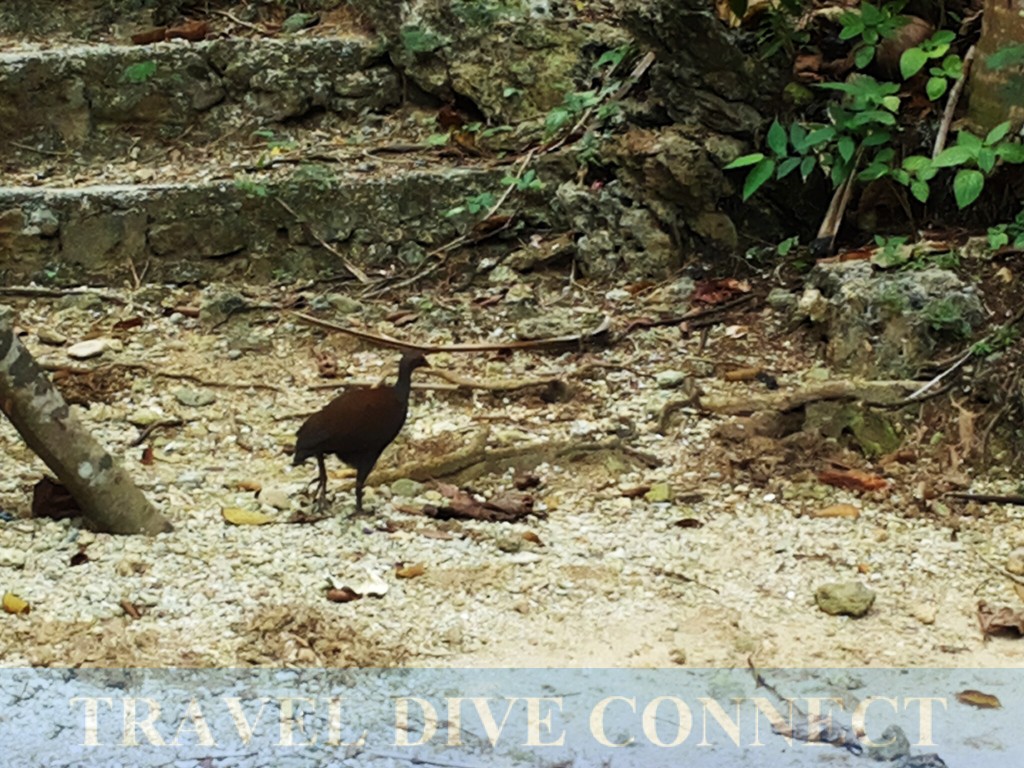
The man-made structures blend in with nature. For instance, the open-air cabana where I stayed the night uses a limestone cliff as foundation and wall. Human presence doesn’t feel intrusive. It even feels like life around the island revolves around its other inhabitants. I love this about Danjugan.
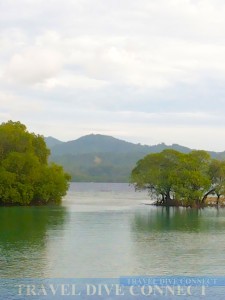 I also love the story of how the island came to be. It used to be owned by a businessman who harvested its limestone rocks to use in Negros Occidental’s coal plants. A part of the beach was already being leased to a group of divers who saw the destructive practices ruin the very reason they leased space in the first place. Aside from mining, people took to illegal fishing practices and poaching endangered species. The divers were so moved that they parted seas – so to speak – to look for funds so they can purchase the island.
I also love the story of how the island came to be. It used to be owned by a businessman who harvested its limestone rocks to use in Negros Occidental’s coal plants. A part of the beach was already being leased to a group of divers who saw the destructive practices ruin the very reason they leased space in the first place. Aside from mining, people took to illegal fishing practices and poaching endangered species. The divers were so moved that they parted seas – so to speak – to look for funds so they can purchase the island.
This gave way to the non-government organization Philippine Reef and Rainforest Conservation Foundation, Inc. (PRRCFI), the current owner and manager of Danjugan Island. To this day, despite temptations and an offer to become the next Boracay, they stay true to marine conservation and keeping Danjugan as it should be.
Paradise Endangered
Unfortunately, this has not stopped the frailty of humanity from rearing its ugly head.
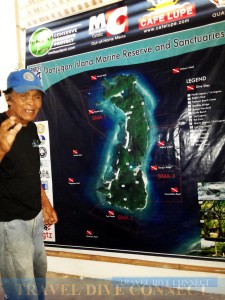
On the way to the island to dive with Easy Diving, I saw fishermen catching fish at the Twin Peaks dive site, a no-take zone that was hidden behind tall cliffs. I told Tatay Ruben about it and his mood changed. He drifted between defensive and frustrated. Maybe I was mistaken about the distance, he suggested. I wasn’t. I dropped the subject, knowing how bad he already felt about the community’s attitudes toward conservation. This was one of our first topics of conversation.
Tatay Ruben was quite open about his struggles as Bantay Dagat. A big part of this concerned the community that was home to Danjugan Island. According to Tatay Ruben, the people of Barangay Bulata were not of the same mindset as him. While he thought of his children and grandchildren, the community was more concerned with the now. The island was teeming with fish – this was opportunity for a bigger catch.
Tatay Ruben had routinely captured perpetrators for decades; and they routinely skirted the law and Danjugan’s MPA mandates.
He spoke about the disinterest and neglect that seemed to prevail among majority of the community members. He ranted about how they insisted on today’s harvest, disregarding future harvests for their children. He ached at how they seemed to be taking the sea for granted, with their irrigation and production wastes emptying out into the ocean.
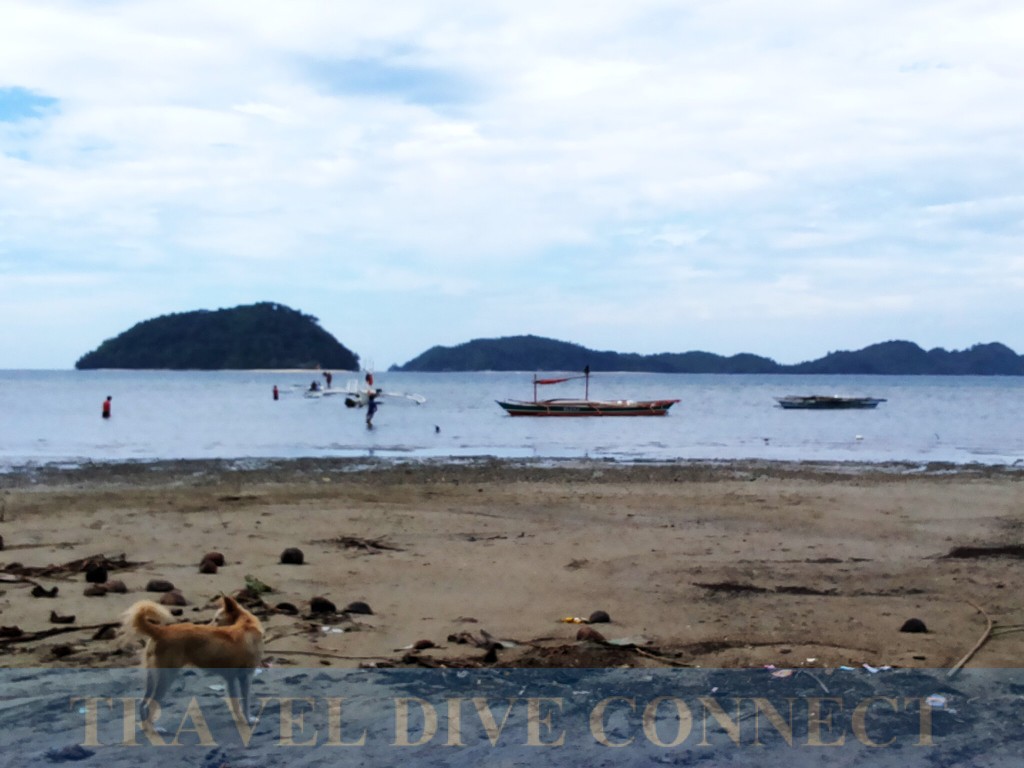
I saw this for myself. It was low tide going to and back from Danjugan, and I had to wade through Barangay Bulata’s side of the ocean for about 5 minutes. It felt dirty. I remained polite and hid as I doused my legs in alcohol. I had blisters on my feet and was afraid of infection. The state of the water, a few meters away from paradise, was that bad.
Hope
There is hope. PRRCFI regularly conducts the Danjugan Island Environmental Education Program (DEEP) for teachers and children of Hinobaan, Cauayan and Sipalay. This is a fully-sponsored program that introduces them to the wonders of the ocean and marine conservation.
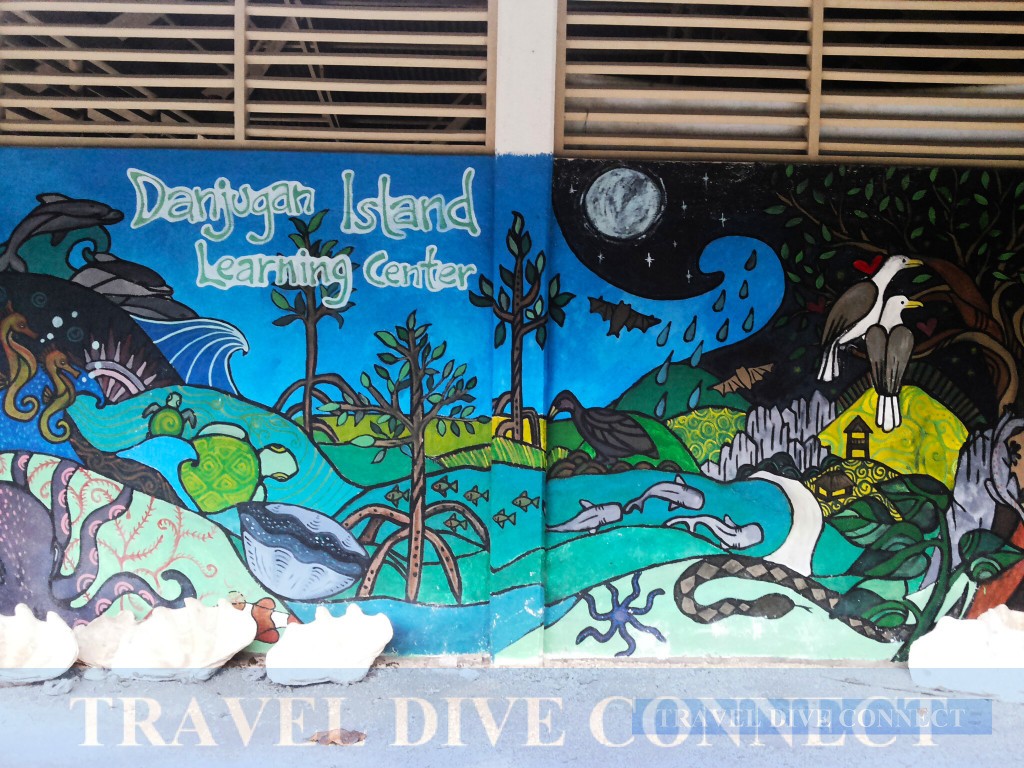
I don’t see a better way than this. Education changes attitudes. Realities expand beyond the now. People begin to care enough to think of alternatives. There is hope.
.

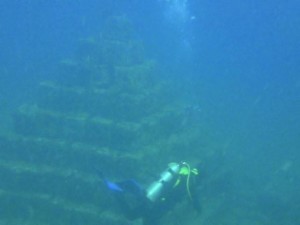
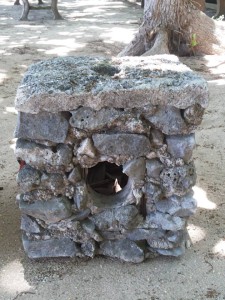
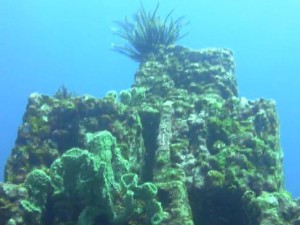
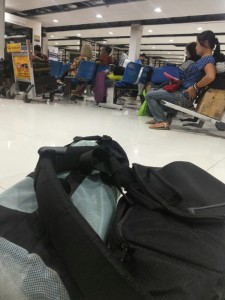
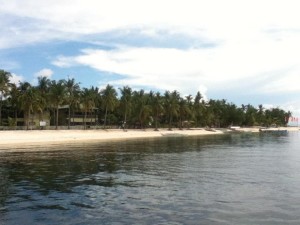

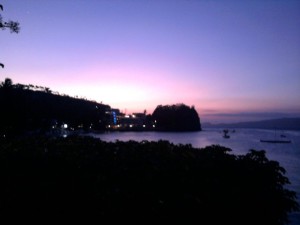 The similarities between Puerto Galera and Boracay are not limited to aesthetics and the sun/sand/sea gratification they offer. The rise of these prime Philippine tourist destinations is practically the same, with Puerto Galera at the heels of Boracay. Both are paradise discovered, developed and overdeveloped, at the cost of the environment and the local communities – what made these places paradisial in the first place.
The similarities between Puerto Galera and Boracay are not limited to aesthetics and the sun/sand/sea gratification they offer. The rise of these prime Philippine tourist destinations is practically the same, with Puerto Galera at the heels of Boracay. Both are paradise discovered, developed and overdeveloped, at the cost of the environment and the local communities – what made these places paradisial in the first place.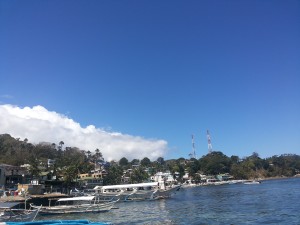 Things are bound to change when climate changed. Like many marine hotspots, today’s freakish climate affects Boracay and Puerto Galera. The rising water temperature causes corals to bleach, and affects other lifeforms, such as krill. This then results in an imbalance, and changes coral reef landscapes. It also creates monster storms; one of which was Bagyong Caloy (international name: Typhoon Chanthu) in 2010. Caloy destroyed the coral reefs of the Sabang, Puerto Galera beaches: Sabang, Small La Laguna, and Big La Laguna. These were some of the major draws of the area – a reason why countless dive shops do business along Sabang’s beaches.
Things are bound to change when climate changed. Like many marine hotspots, today’s freakish climate affects Boracay and Puerto Galera. The rising water temperature causes corals to bleach, and affects other lifeforms, such as krill. This then results in an imbalance, and changes coral reef landscapes. It also creates monster storms; one of which was Bagyong Caloy (international name: Typhoon Chanthu) in 2010. Caloy destroyed the coral reefs of the Sabang, Puerto Galera beaches: Sabang, Small La Laguna, and Big La Laguna. These were some of the major draws of the area – a reason why countless dive shops do business along Sabang’s beaches.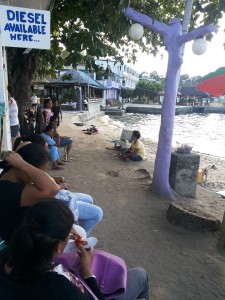
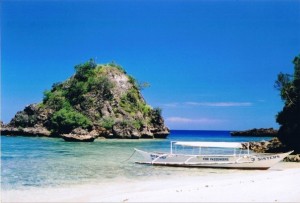
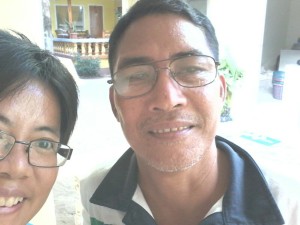
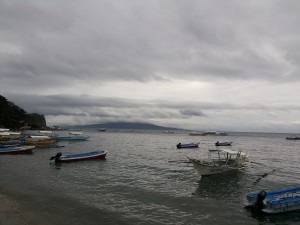 You can say that nothing is going right for TDC’s first leg. I come into Sabang when weather’s pretty bad. The water is restless. Cloudy skies. No one goes beyond the house reef to dive. I have sashimi as my late lunch and it is old fish. I feel scared for my tummy. My contact at Action Divers and I meet, and he tell me that tomorrow’s dives are cancelled. We will wait and see on Wednesday. So that’s a maybe for me.
You can say that nothing is going right for TDC’s first leg. I come into Sabang when weather’s pretty bad. The water is restless. Cloudy skies. No one goes beyond the house reef to dive. I have sashimi as my late lunch and it is old fish. I feel scared for my tummy. My contact at Action Divers and I meet, and he tell me that tomorrow’s dives are cancelled. We will wait and see on Wednesday. So that’s a maybe for me.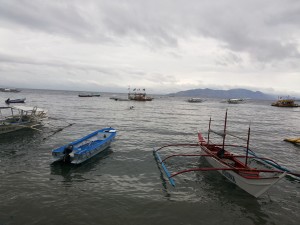 Well, if I can get to Verde Island this time around….
Well, if I can get to Verde Island this time around….